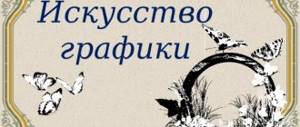Music in which the leading role belongs to the voice is called vocal. It can be written for one, two or many performers, with or without accompaniment. The genres of vocal music, as well as instrumental music, having gone through a long path of development, were formed under the influence of the social functions of art.
This is how cult, ritual, labor, and everyday chants arose. Over time, this concept began to be used more widely and generally. In this article we will look at what genres of music there are.
Vocal genres of the Renaissance: mass
This is the name of an essay written for a cult ritual. The chants are based on texts taken from the liturgy of the Latin rite and set to music. Composers of the late Renaissance wrote in this genre: Lasso, Palestrina. The Mass traditionally consists of five parts: Kyrie, Credo, Gloria, Agnus Dei and Sanctus.
Until the nineteenth century, works of this genre were created exclusively for male choirs, the soprano part being performed by boys.
Lesson summary for 5th grade “Vocal music”
— What conclusions can you draw from what has been said?
Motherland, Russia, Rus'! Writers and poets, musicians and artists reverently and inspiredly glorify the image of the Fatherland in their works. It is works of art that help us feel and understand our attitude towards the Motherland, teach us to take care of nature, appreciate people, and preserve the culture and traditions of our people.
-And what does each of you imagine when they pronounce the word Russia?
Try to formulate the topic of today's lesson.
- What we will do?
- How can we achieve the goal?
The topic of our lesson: “Russia, Russia, there is no more beautiful word...”
2) Immersion in problematic content. Learning new material.
Let’s now read in the textbook an excerpt from V. Belov’s story “My Quiet Motherland”
and find in it words related to music.
— In what way, in your opinion, is the musicality of the writer’s lyrical reflections manifested?
The content of this prose passage is ambiguous. All nature is animated, endowed with human properties - close to music. The whole text is about silence, and at the same time it is filled with sounds. Everything here sounds and breathes music.
Birch is the favorite tree of all Russian people. Slender, curly, with white trunks, she was always compared in Rus' to a beautiful and gentle girl. The birch is considered a symbol of Russia, a symbol of the Motherland. It is sung in poetry and prose, in music and painting, in folklore.
Performance of “Song about the Birch Tree”, lyrics by S. Yesenin, music by G. Struve
People say: “Where there is song, life is fun.” The songs were accompanied by playing musical instruments. There are musical instruments that have become a symbol of a nation.
— What Russian folk instruments do you know? Name it.
For Russians it is a balalaika and an accordion. Their vibrant, silvery-ringing voices cannot be confused with any others.
Yes, the Russian people are wise and talented. As soon as people start singing and dancing, there will be fun all over the street. And what could be more playful and joyful than a daring Russian song and dance.
The Russian folk song “Kamarinskaya” is performed by an ensemble of Russian folk instruments.
-What musical instruments are needed to accompany this piece?
-What rhythm will they perform?
Performing a song with musical and rhythmic movements according to the text.
— What helped us convey the joyful, danceable nature of the work?
No musical instruments emphasize the rhythm of the piece like percussion instruments.
3) Projecting a new task onto other situations. Consolidation of new knowledge.
Folk music lies at the heart of the work of Russian composers. She, like a source of living water, gave composers inspiration, taught beauty and skill.
Motet
Appeared in France in the mid-seventeenth century. Many genres of vocal music of this period were written in a polyphonic style. A striking example of this is the motet. It combined several melodies with different lyrics. Moreover, the lower voice (tenor) performed the chant in Latin, and the rest (motetus, triplum, duplum) performed the parts in French. The content of the texts was of a humorous or loving nature. Motets were written for choir with instrumental accompaniment and a cappella. Palestrina, J. Despres, G. Dufay, and later W. Mozart, G. Handel, A. Bruckner, J. Brahms turned to this genre.
Chamber genre
Chamber vocal genre (from Latin camera - 'room') is music performed by a small group of performers, intended for a small audience:
- song;
- romance;
- ballad;
- barcarolle;
- serenade;
- elegy and other miniature works.
Let's look at the genres of vocal music in more detail.
Villanelle
It is the predecessor of the madrigal. Literally, the name “villanelle” translates as a village song. Works of this genre, written in couplet-strophic form, were intended for
For performance with three or four voices. The composition of villanelles is usually polyphonic, the content is comic or pastoral. The main melody of the song (upper voice) was performed by the soloist, and the remaining parts served as accompaniment. Over time, this function was assigned to musical instruments.
Electronic music genres
Let's look a little at the main genres of electronic music. Of course, we won’t touch on everything here. However, we will analyze some of them. Here is the list:
- House
- appeared in the 80s of the last century. It originates from the disco of the 70s. Appeared thanks to the experiments of DJs. Main features: repeating beat rhythm, 4x4 time signature and sampling. - Deep house
is lighter, more atmospheric music with a deep, dense sound. Includes elements of jazz and ambient. The production uses solo keyboards, electric organ, piano and female vocals (mostly). Developed since the late 80s. Vocals in this genre always take a secondary place. The first one contains melodies and sounds to depict the mood. - Garage house
is the same as deep house, only vocals play the main role. - New disco
(nu disco) is a more modern musical genre based on the revived interest in disco music. It's very popular now to go back to your roots. Therefore, this genre is based on the music of the 70s and 80s. The genre itself appeared in the early 2000s. Synthesized sounds similar to the sounds of real instruments are used to create disco of the 70s and 80s. - Soul full
house - the basis is taken from house with a 4x4 rhythmic pattern, as well as vocals (full or in the form of samples). The vocals here are mostly soulful and very beautiful. Plus the use of a variety of musical instruments. Such a rich presence of instruments brings the music of this genre to life very well.
Choral genres of vocal music
They occupy a special place in art. These works, written for choir, are distinguished by their freedom of construction and rare use of the verse form. They are characterized by the maximum correspondence of the musical material to the words. A special, but more complex genre is the vocal cycle. It is formed by several independent works united by a common artistic meaning. Many composers turned to vocal cycles. Among them are Schumann, Glinka, Shostakovich, Mussorgsky, Schubert.
Romance
Romance is a genre of chamber vocal music. In the Middle Ages, the term meant a poem in the “Roman” language (Spanish), which was composed to be set to music. It was a simple composition. In a romance, in addition to the text, accompaniment plays a big role. Most often, vocals are accompanied by the shimmer of guitar strings or the support of a piano. Composers A. L. Gurilev, A. A. Alyabyev, A. E. Varalmov made an invaluable contribution to the development of Russian romance as a genre of vocal and instrumental art.
In the 19th century, during the era of romanticism, romance became the leading genre of vocal music, because it was he who was able to convey in all details the inner experiences of a person, which was so characteristic of that artistic movement.
Cantata
This is the name of a cyclic complex work of lyrical-epic or solemn content.
It is small in size and can include solo vocal numbers, choral parts, ensembles and orchestral episodes. The sections of the cantata, united by a common theme, are independent. Therefore, they are very often performed in concert programs as separate numbers. Separate parts of this genre convey various images (lyrical, dramatic, contemplative): S. Prokofiev “Alexander Nevsky”.
Genres of instrumental and vocal music
Below you will find the main genres of instrumental and vocal music. For each direction I will give you short descriptions. Let's touch on the basic definition of each type of music a little more.
Genres of vocal music
There are several genres of vocal music. It is worth saying that the direction itself is the oldest in the history of the development of music. After all, it is the main key for the transition of literature into music. That is, literary words began to be used in musical form.
Of course, these words were given the main role. Due to this, such music began to be called vocal. A little later, instrumental music appeared.
In vocal music, in addition to vocals, various instruments can also be used. However, in this direction their role is relegated to the background.
Here is a list of the main genres of vocal music:
- An oratorio
is a very large work for soloists, orchestra or choir. Typically, such works dealt with problems of a religious nature. A little later, secular oratorios appeared. - Opera
is a huge dramatic work that combines the genres of instrumental and vocal music, choreography and painting. A special role here is given to various solo numbers (aria, monologue, and so on). - Chamber music
- mentioned above.
Genres of instrumental music
Instrumental music
- these are compositions that are performed without the participation of a vocalist. Hence the name instrumental. That is, it is performed only with the help of instruments.
Very often, many artists in their albums use instrumentals as bonus tracks in the album. That is, several of the most popular compositions can be selected and then their versions without vocals can be recorded.
Or they can select all the songs on the album. In this case, the album is released in two versions. This is usually done to increase the value of the product and raise its price.
There is a list for certain genres of instrumental music:
- Dance music
- usually simple music for dancing - Sonata
- used as a solo or duet for chamber music - Symphony
- harmonious sound for a symphony orchestra
Liturgical genres of vocal music
They occupy a significant place in concert practice. Moreover, both Orthodox chants (“Vespers” by Rachmaninov, “Liturgy” by Grechaninov and Tchaikovsky) and Catholic ones (“Requiem” by Verdi, Mozart) are very popular. During religious ceremonies, these writings are supplemented by ritual actions, prayers and processions. And on the concert stage they are more reminiscent of a cantata or oratorio, consisting of separate ensemble parts, choirs, and arias. At the end of the twentieth century, liturgical genres acquired secular features. A striking example of this is “Requiem” by Kabalevsky and Britten, as well as Shchedrin’s work “The Sealed Angel”.
What genres of music are there?
We warn you right away that it is very difficult to answer the question of what genres of music there are in one article. Over the entire history of music, so many genres have accumulated that it is impossible to measure them with a yardstick: chorale, romance, cantata, waltz, symphony, ballet, opera, prelude, etc.
For decades, musicologists have been “breaking their spears”, trying to classify musical genres (by the nature of the content, by functions, for example). But before we dwell on the typology, let’s clarify the very concept of genre.
What is a musical genre?
Genre is a kind of model with which specific music is correlated. It has certain conditions of execution, purpose, form and nature of content. Thus, the purpose of a lullaby is to calm the baby, so “swaying” intonations and a characteristic rhythm are typical for it; in a march - all expressive means of music are adapted to a clear step.
What are the genres of music: classification
The simplest classification of genres is based on the method of execution. These are two large groups:
- instrumental (march, waltz, etude, sonata, fugue, symphony)
- vocal genres (aria, song, romance, cantata, opera, musical).
Another typology of genres is related to the performance environment. It belongs to A. Sokhor, a scientist who claims that there are genres of music:
- ritual and cult (psalms, mass, requiem) - they are characterized by generalized images, the dominance of the choral principle and the same mood among the majority of listeners;
- mass-domestic (varieties of song, march and dance: polka, waltz, ragtime, ballad, anthem) - characterized by a simple form and familiar intonations;
- concert genres (oratorio, sonata, quartet, symphony) – typically performed in a concert hall, lyrical tone as the author’s self-expression;
- theatrical genres (musical, opera, ballet) - require action, plot and scenery.
In addition, the genre itself can be divided into other genres. Thus, opera seria (“serious” opera) and opera buffa (comic) are also genres. At the same time, there are several more varieties of opera, which also form new genres (lyric opera, epic opera, operetta, etc.)
Genre names
You could write a whole book about what names music genres have and how they come about. Names can tell about the history of the genre: for example, the dance’s name “kryzhachok” is due to the fact that the dancers were positioned in a cross (from the Belarusian “kryzh” - cross). Nocturne (“night” - translated from French) was performed at night in the open air. Some names originate from the names of instruments (fanfare, musette), others from songs (Marseillaise, Camarina).
Often music receives the name of a genre when it is transferred to another environment: for example, folk dance to ballet. But it also happens the other way around: the composer takes the theme “Seasons” and writes a work, and then this theme becomes a genre with a certain form (4 seasons as 4 parts) and the nature of the content.
Instead of a conclusion
When talking about what genres of music there are, one cannot fail to mention a common mistake. There is confusion in concepts when styles such as classical, rock, jazz, hip-hop are called genres. It is important to remember here that genre is a scheme on the basis of which works are created, and style rather indicates the characteristics of the musical language of creation.
Author – Alexandra Ramm


